In South Luangwa national park in Zambia, your chances of getting a leopard picture are very high. There seem to be more of them there than most other reserves. So this is where to go if that dappled cat spot in your digital album has stayed frustratingly blank for far too long.
Taking a leopard picture is a major challenge on any safari because they make themselves so scarce and when you get lucky enough to see one of these beautiful, dappled cats it's normally just for a split second as they saunter off into the bushes.
It's always a highlight of my safari when I see one especially if I can get a halfway decent leopard photo. I have seen and photographed many over the years mostly in the Kruger National Park in South Africa.
Surprisingly, a few of the sightings occurred around mid day so the often quoted fact that leopards are nocturnal and you will probably only see them in the early mornings or late evenings is a little misleading.
Most of them were walking along the road when I saw them and the rest were lying on a branch in a tree. So when you go on safari it's a good idea to keep an eye on any large trees in the area in the hopes of getting a photo opportunity.
South Luangwa in Zambia is notorious for African leopard sightings and is reputed to be the best area in which to find them.
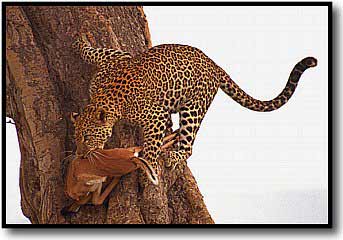
© John Milbank - Climb
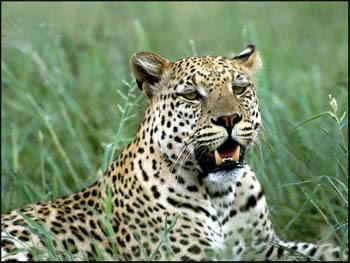
The Masai Mara and Serengeti are also good areas because when the cats do decide to leave the dense vegetation areas that they inhabit, you can spot them more easily on the open grassland. And when the wildebeest migration is on they become a lot more bold because of all the easy pickings around.
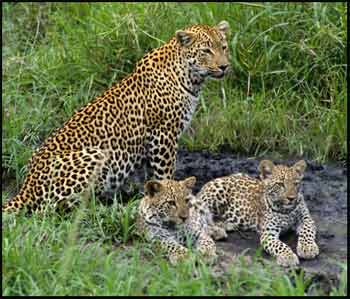
Are these the cutest baby animals around? There are normally 2-3 cubs born in every litter and only every second year or so. Very few babies survive to adulthood and they stay with their mother for two years before leaving to find their own territory.
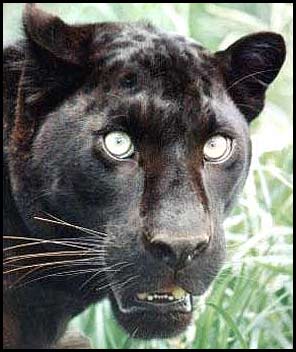
Black leopards were once thought to be a separate subspecies but in actual fact their dark colour is due to a genetic mutation known as melanism. They still have the distinct rosette markings but they blend in to the overall darkness of the coat so it's difficult to differentiate on a leopard picture.
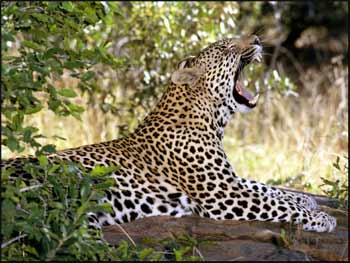
The leopard hunts a wider variety of prey than any other big cat even though they do compete with lions and hyena for food. They can hunt in trees as well as on the ground and will make a meal of insects, rodents, fish, wildebeest, zebra, gazelle and even dogs if they get the chance. They protect their kills by carrying them up the nearest tree.
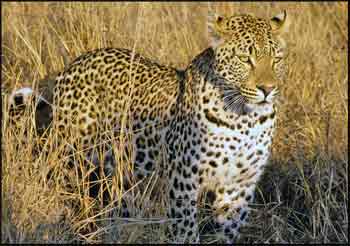
Distribution
There are estimated to be about half a million leopard in sub Saharan Africa and they thrive because they are so adaptable and because there is still habitat available for them. In contrast the snow, clouded, Amur, Barbary, Java, North China and Sri Lanka leopards are all on the endangered list because their habitat has been severely restricted by man.

